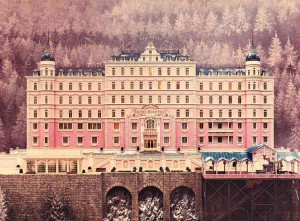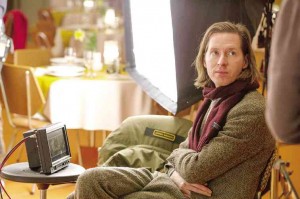
Wes Anderson’s “The Grand Budapest Hotel” recreates what appears to be Eastern Europe between the two world wars and is easily set to be the director’s most visually appealing work to date.
Ralph Fiennes plays a concierge named Gustave H who works at a famous European hotel and has been framed for murder after a priceless Renaissance painting housed in the hotel had gone missing. He teams up with the lobby boy, Zero Moustafa (Tony Revolori), to prove his innocence.
Anderson set his tale in a fictional spa town in the imaginary country of alpine Zubrowka, for which he created not only a complete visual aesthetic but also a cohesive 20th-century history mirroring Eastern Europe, complete with a fascist takeover in the 1930s and a Communist period after that, but also a more distant past in the vein of the belle epoque.
The extensive planning of the film began with finding just the right location for the Grand Budapest.
The search started with Anderson perusing the archives of the US Library of Congress, which holds a large collection of photocrom images from the era of classic European travel. But after scouting some of the resorts in the photos, and discovering most to be torn down or too extensively renovated, Anderson chose to shoot in no hotel at all.
Görlitz

Instead, he discovered an unexpected kind of back lot: a vast, turn-of-the-century department store smack at the intersection of Germany, Poland and the Czech Republic, in the Unesco World Heritage town of Görlitz.
It turned out Görlitz had far more to offer than just the department store, including architectural influences from the Gothic and Baroque to the almost-modern curves of Art Nouveau.
Anderson and his production designer Adam Stockhausen ultimately decided to create the hotel exterior as a beautifully elaborate miniature in the workshops at Babelsberg. It was also there that they built and filmed much of the cable-car and ski-chase sequences, building miniature models in the workshop and then moving them outdoors to be shot under natural light—often pushing a camera on wheels through real miniature trees—allowing a greater feeling of naturalism than you’d normally achieve with a model.
“First, there were endless amounts of research into what hotels looked like in the time period, and then the details that really spoke to us began to bubble up to the surface, and we’d say, ‘That stairway’s incredible, that elevator door’s incredible’ or ‘that concierge desk is incredible,’” Stockhausen said. “And as those pieces started to gel into a shape, pretty soon we could say, ‘OK, this is starting to feel like our hotel.’
“Wes [Anderson] likes to shoot in complex camera moves, so the physical space really had to line up. We ended up building the 1960s version of the hotel first, and then we shot backwards, peeling away layers to expose the earlier period hotel within.”
Many of the film’s key props were made by local artists and artisans in Görlitz, including the Courtesans au chocolat, made by local baker Anemone Müller-Grossman, Monsieur Gustave’s signature pinky ring, and the porcelain pendant that Agatha (played by Saoirse Ronan) wears.
The design of the film emerged from the collaboration between Anderson and Stockhausen. The latter, who had also worked on “The Darjeeling Limited,” “Moonrise Kingdom” and recently Steve McQueen’s “12 Years a Slave,” knew this film would be a creative experience unlike any other.
“The Grand Budapest Hotel” will be shown exclusively at Ayala Malls cinemas nationwide starting April 19 (Black Saturday).

